Words supplied by Craig Rodgers, Group Manager On-Farm Sales.
Spring has once again delivered a variety of weather conditions after a warmer than usual August and September period and October and November had mixed weather. Soil temperatures struggled to rise with inconsistent sunshine hours meaning crops and pastures over this period were slow to establish. Soil conditions did remain favourable with minimal delays to crops being sown, helping to take the pressure off contractors. We have also seen regular rainfall helping to maintain moisture levels. This is on the back of some hot days and nor-west winds which threatened some crops earlier on.
The early winds meant irrigators were turned on earlier than in previous years and only some consistent rain in November has taken the pressure off the irrigators late in the month. The regular rainfall has meant water reserves seem to be ok at this early stage. The days are becoming longer and the increase in sunshine hours will give us an indication of the reserves available through the early summer. It becomes very important to regularly check moisture levels in the soil.
Pasture
Pasture growth was slow in early spring as soil temperatures barely got above 10 degrees. Earlier sown new pastures struggled to establish and compete with weeds, and early weed sprays were slow to reach full effect due to these lower soil temperatures. Regular rainfall is helping establishment with this set to continue following the recent rains.
Once again variety selection has been a good discussion point and for future pasture renewal, monitoring performance over the summer period should give an indication of what suits your farming set up whether in a sheep, beef, deer or dairy situation. There are some new varieties in the market this year and early trial results are indicating improved performance and tonnage. While most grasses are bred to produce good yields in suitable conditions, it has become obvious that not all grasses suit all farmers or the management style you may have on yours. Every farm is different, especially seasonality, demand and management which should be what you discuss when looking at options for re-grassing.
It takes 12 months to establish a new pasture and good management through this period will improve persistence, especially through the first summer. The most important grazing is the first one and should occur once plants cannot be pulled out of the ground, this helps tillering and growth, and enables light to reach clover that can often establish slower in spring sown pasture. Always keep pastures relatively short (less than 3500kg/DM) which helps them tiller but try not to graze them too low reducing leaf and stem material affecting re-growth and plant reserves.
Competition
With such rapid growing conditions currently, we are seeing quick establishment of weeds in all types of crops and new pasture. Due to the warmer soil temperatures they have become very aggressive giving unwanted competition to these crops. Regular monitoring and spraying of any competition in pasture and crops gives it the best possible chance to establish and reach yield potential at a later date. These applications of chemicals should go on at the earliest possible dates, as larger weeds become harder to kill and control. It is also a good time of year to tidy up fence lines, laneways and yard areas as we will see problem weeds starting to seed through this period, spreading viable seeds across pasture and cropping areas.
Cereals and Grain
Grain crops have established well and there has been limited disease pressure to date, but this can change very quickly through December so monitor regularly and a prevention spray can often be more practical than fighting a disease outbreak. Cereal crops look very even this year and while very slow through the late winter period have had accelerated growth through November. Some cereal crops that are going to be taken for silage are looking very good and just need some good sunshine hours to help with the seed fill stage.
When writing this, the grain price was softening with minimal demand in the late spring due to strong pasture growth. This can also be driven by extra grain becoming available as farmers look to clear silos and storage areas pre-harvest, reports are saying there is plenty of both wheat and barley available. At this time of year, it is always good to check storage facilities for leaks, we have seen an upswing in contaminated silos and storage areas due to moisture which has brought on pest infestations and mouldy and musty grain which has seen some loads turned around at destination. This is a hard job to organise and puts a lot of pressure on freight companies, grain reps and end users, but especially tough for the cropping farmer who does not like to see grain returning to farm due to contamination.
Kale
Once again, we have seen an increase in kale sowings and at time of writing with some varieties already sold out. While fodder beet has been popular over the last few years due to increased yields over smaller areas, it has been great to see an increase in discussion on kale, and the flexibility it brings to your farming set up including ease of feeding. The increase in yields over the last few years has been impressive especially given the minimal inputs. Establishment has become easier with the increase in farmers using coated seed for insect protection and the use of pre-emerge weed sprays. We are also seeing a wider range of sowing dates from early October to mid – January and all producing similar yields come the winter with some good yields also across dryland crops. The ease of management through the growing season and at grazing time has initiated a spike in sales over the last few years.
Fodder Beet
Early sown fodder beet crops were very slow establishing this year and have endured weed pressure due to the lower soil temperature in early spring. We have seen good establishment of later sown crops, however it is noticeable with a couple of cold weather snaps that a reduction in soil temperature of only a couple of degrees does slow the growth of fodder beet. This allows future weed strikes once the temperatures warm again and with the warmer soil temperatures we have seen some aggressive weed growth. A good weed spray programme remains important, and very important not to wait too long for your next weed spray application. A delay of 2 or 3 days can make larger weeds that little bit harder to kill and while this puts extra pressure on contractors and spray trucks, look to book them that little bit earlier and work in closely with your local rep or crop specialist.
There has been less discussion this year around varieties than in previous years. Another reduction in available options has helped and the inconsistency of trial data and feed competitions. The upcoming environment changes relating to winter grazing has left most farmers unsure on what is exactly the right cultivar for their farm. If you are not getting a suitable yield or the variety you are growing is not quite fitting your demand, then discuss this with your local rep or advisor. There are plenty of options available now and a small change in cultivar which could relate to dry matter potential, % of bulb out of the ground or even growing and grazing characteristics could help your farming set up.
Related
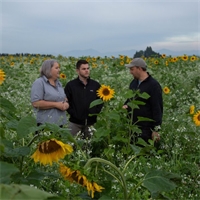
Energy consumers have the opportunity for more choice of energy companies, thanks to the recent deci...
Read More
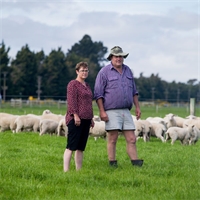
Born out of a need to find a solution to their daughter’s dairy intolerance, Kirwee farmers Matt an...
Read More

Hosting a charcuterie picnic is a delightful way to impress guests or simply enjoy a relaxing summer...
Read More
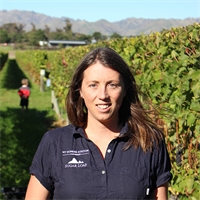
The Acland family is renowned for the energy and breadth of enterprises throughout Canterbury and be...
Read More
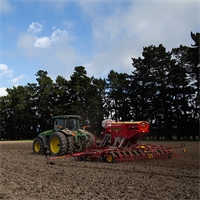
Cereal plantings have continued through the winter and preparation for early pasture renewal is unde...
Read More
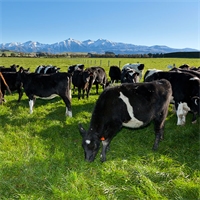
New rules soon to come into force mean getting the most from nitrogen (N) applied is more important ...
Read More